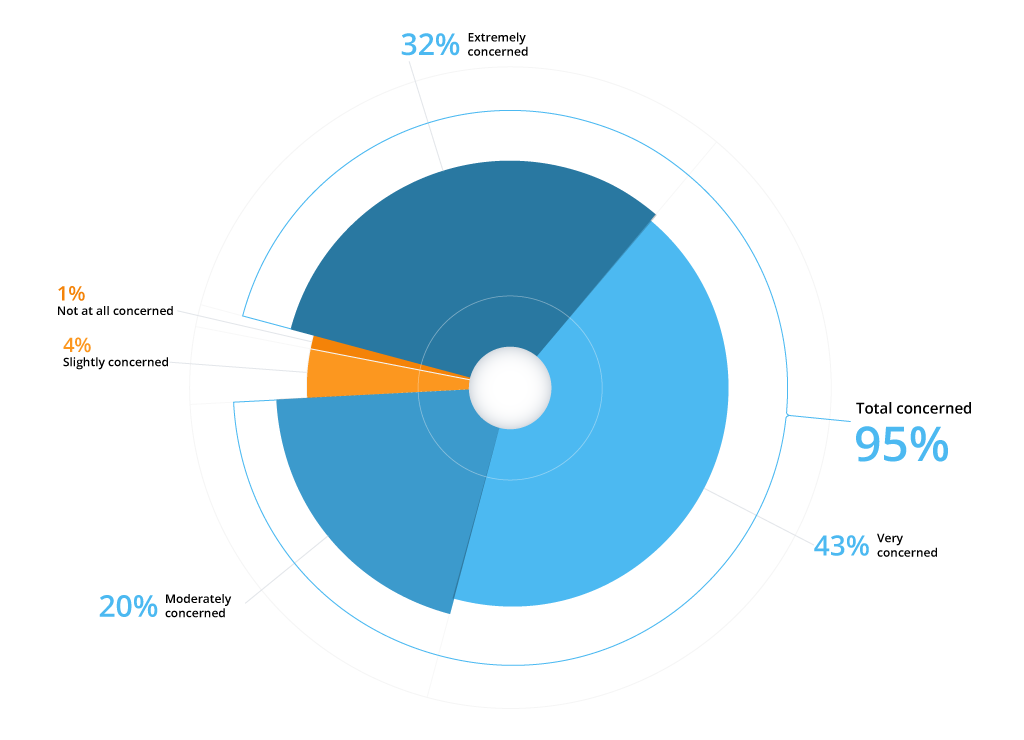Six Challenges of Cloud-Native Application Development and How to Address Them
These stats are no surprise considering the multiple benefits of cloud-native development — including accelerated time to market, smooth management, slashed costs, minimized downtime, and scalability. As always, there is the reverse side of the coin. As a company with many years of experience in cloud-native app development, we will cover the challenges you might face on the road to success, and explain how our expertise can address them.
Service Integration
Cloud-native applications have a distributed nature, i.e., consist of several disparate services. The good thing is that this makes them more flexible and scalable than monoliths. The con? Possible difficulties when connecting moving pieces in cloud-native workloads.
Considering the fact that integration in general is challenging for organizations, with 89% of companies having a data integration backlog, service integration in cloud-native development needs particular attention.
For starters, make sure you assign a separate service to each particular functionality type of your workload instead of making a single service disperse doing multiple things. Don’t introduce new services just for the sake of adding them — doing so might also add unnecessary complexity to your application. Choosing optimal deployment techniques is also a key piece of an effective service integration puzzle. You can unify multiple services into a single workload using different methods:
- Containers are packed with everything necessary — including code, system tools, libraries, and dependencies — to help services run independently and seamlessly move between IT environments.
- Serverless functions allow developers to execute the code contained in functions without the need to manually deploy an infrastructure in the form of servers, virtual machines, and containers.
- API gateways represent specific protocols and standards that help disparate systems communicate with one another. APIs keep data and functionality in sync in enterprise applications, enhancing overall productivity and efficiency.
A case in point: Infopulse enabled interoperability and intelligent workflow automation with a custom enterprise integration platform for an industrial company. The solution can be scaled horizontally, which allows adding new integration flows and connecting the platform with more systems — all without affecting existing features.
Process Visibility
Each microservice that can potentially run on 100 machines produces huge amounts of data, making the cloud monitoring process quite difficult. With a multitude of metrics in place, it can be challenging to choose the most relevant ones for process analysis.
Built on traditional IT environments, the BI tools you know might fail to address tailored monitoring and analysis tasks. To gain full visibility into what is happening in the cloud, make the most of cloud customization. An experienced BI development company will help you gather and process all the relevant information about your cloud services as well as filter and focus on the most important metrics for your particular business case. Detailed information on cloud performance and resource spend will further help you make data-driven decisions and optimize costs. Such customized modules will also become indispensable for gauging your applications’ health and identifying all possible issues in a timely manner.
Data Storage
A cloud-native architecture usually comprises an immutable infrastructure model for deploying containers, serverless functions, and applications — and this can be an impediment to consistently storing data in them.
To address this challenge, think about decoupling data storage from applications and host environments. Store data externally by using tools like Amazon Simple Storage Service (Amazon S3). It is a secure environment that automatically builds and stores copies of all S3 objects across multiple regions, thus providing 99.9% durability. As a result, the data is protected against errors, and is available for connecting with relevant workloads — all on demand. Another option is Azure Storage by Microsoft. This tool offers improved accessibility, customized extensions, versatility in managing accounts, and enhanced security.
A case in point : Infopulse implemented a sophisticated Azure-based Cloud Data Warehouse solution to help a large agro-industrial group modernize their key business processes. The platform offers flexible architecture, a consolidated data model, and a set of marts with custom data criteria for advanced report generation.
Tools Selection
With so many cloud providers and tools available on the market, it may appear difficult choosing an optimal one for your particular business case. To make the best choice, go through official documentation, case studies, online reviews, and forums, or delegate this task to an experienced cloud solution development company. No matter whether you decide to research by yourself or ask a third-party for help, consider some key factors:
- Features and capabilities. The platform you choose should be secure and reliable so you can eliminate downtime due to data breaches or unexpected failures. Among other aspects to pay heed to are performance, compatibility, and scalability.
- Ease of use. To avoid paying for additional time and effort spent on team education and significant organizational shifts, choose tools that are easy to handle and will not further complicate your IT landscape.
- Cost. Select the pricing and billing model that will perfectly address the specifics of your business, whether it is a subscription-based approach, a fixed fee, or a pay-as-you-go model. Do not underestimate the power of cost-benefit analysis and TCO practices.
- Maintenance and support. Real-time cloud monitoring, documentation updates, new feature release, bug fixes — opt for the provider with best maintenance and SLA options.
Apps Delivery Pipelines
Another challenge lies in building cloud-native application delivery pipelines. The majority of enterprise apps run in traditional, on-premises environments that are not cloud-friendly, i.e., clunky when being integrated with services and applications running on public clouds.
This means you may face unpleasant delays when deploying code from local or on-prem environments to the cloud. Another negative consequence is that by developing and testing apps locally, you cannot perfectly emulate production-like conditions, which might lead to unexpected application behavior when deployed.
By moving your CI/CD pipeline into a cloud environment, not only do you benefit from scalability and immutability, but also obtain the mimicked production conditions — all to bring your pipeline closer to your applications. The code is created closer to where it will be deployed, testing workflows are implemented faster, and the overall time to market is accelerated.
A case in point: Infopulse helped a large recycling company create a highly performant cloud environment with automated CI\CD pipelines for Infrastructure-as-Code and Application-as-Code. This allowed the client to give instant access to their cutting-edge cloud services while notably improving end-user experience.
Cloud Security
Unfortunately, cloud environments are prone to cyber attacks. A report by Fortinet states that 95% of organizations are preoccupied by their cloud security posture, with insecure APIs, sensitive data breaches, and unauthorized access being the key concerns. Other stats say that 39% of the surveyed companies faced a cloud data breach in 2022, as compared to the 35% reporting the same for 2021.
Such alarming figures are the reason why you should make extra efforts to protect your cloud-native infrastructure and its applications:
- Cloud encryption encodes both data on transit and at rest through specific protocols, impeding an attacker from using it unless they have a decryption key. You can use symmetric protocols like AES and TLS, or asymmetric approaches such as ECC and DSA.
- Least privilege access means giving access to a minimal set of cloud resources depending on the context and user identity. This approach also includes making resourcing invisible to the internet through proxy-based best practices.
- Constant security audits involve testing your cloud environment to quickly detect and address all possible vulnerabilities and to verify the compliance with specific regulations, industry standards, and security benchmarks.
We have named just a few practices you can implement to ensure your cloud security. To achieve greater results in this regard, bring in third-party expertise. An adept cloud security services provider will build a tailored strategy for your particular security needs and implement it without a hitch.
Conclusion
Despite the array of challenges that cloud-native development and deployment entails, it has an increasingly bright future. Partnership with a seasoned cloud expert like Infopulse will help you make the most of the cloud to drive tangible business value, including increased efficiencies, faster time to market, business continuity, and minimized costs.





![Cloud Native vs. Cloud Agnostic [thumbnail]](/uploads/media/thumbnail-280x222-cloud-agnostic-vs-cloud-native-architecture-which-approach-to-choose.webp)
![DevOps Adoption Challenges [thumbnail]](/uploads/media/thumbnail-280x222-7-devops-challenges-for-efficient-adoption.webp)
![Azure Monitor for SAP [thumbnail]](/uploads/media/thumbnail-280x222-azure-monitor-for-sap-solutions-an-overview.webp)

![Mortgages Module Flexcube [Thumbnail]](/uploads/media/thumbnail-280x222-Secrets-of-setting-up-a-mortgage-module-in-Oracle-FlexCube.webp)
![Digital Alignment Drivers [thumbnail]](/uploads/media/thumbnail-280x222-the-top-forces-driving-digital-alignment.webp)
![AWS vs. Azure Cloud Platform [Thumbnail]](/uploads/media/thumbnail-280x222-comparison-of-aws-vs-azure-when-each-cloud-platform-works-best.webp)
![Cloud-Native Maturity Model Assessment [thumbnail]](/uploads/media/thumbnail-280x222-what-Is-the-cloud-native-maturity-model-definition-and-assessment-criteria.webp)
![Containers vs VMs for Microservices [thumbnail]](/uploads/media/thumbnail-280x222-containers-vs-vms-what’s-better-for-microservices.webp)
![Accelerated Development with Azure DevOps Toolset [thumbnail]](/uploads/media/thumbnail-280x222-how-to-improve-developer-velocity-with-azure-devops.webp)